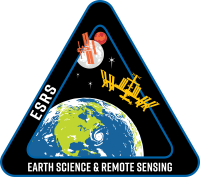Colorful Tampa Bay
An astronaut aboard the International Space Station took this photograph of Tampa Bay, located along the west-central coast of Florida. It is the state’s largest open-water estuary, covering approximately 400 square miles (1,000 square kilometers). The photo shows the expanse of the bay, its connection to the Gulf of Mexico, and the surrounding urbanized land.
Tampa Bay is composed of several arms and smaller bays, such as Old Tampa Bay and Hillsborough Bay, and is characterized by its shallow, calm, and colorful blue-green waters. Deeper waters appear darker blue and shallow waters lighter blue. In some areas, vegetation and sediment entering the bay from the mouths of rivers make the water appear green or light brown. Sediment can also come from white sand beaches, carried out to sea by the currents.
The surrounding region is a blend of wetlands, rivers like the Hillsborough River and the Little Manatee River, and coastal ecosystems that provide habitat for flora and fauna. Natural parks help preserve the estuarine area, such as the Terra Ceia Aquatic Preserve. This preserve includes 3 square miles (8 square kilometers) of mangrove forests and freshwater and saltwater wetlands.
Prominent bridges like the Sunshine Skyway and the Howard Frankland Bridge cut across the bay, connecting the various metropolitan regions. Barrier islands, like Anna Maria Island, lie parallel to the shoreline and are critical for protecting coastal communities and ecosystems from extreme weather.
Along the coast, sandy beaches, residential neighborhoods, and marinas demonstrate the interplay between natural and human-made landscapes. Urban development is dense around MacDill Air Force Base and Tampa International Airport, along with the cities of Tampa and St. Petersburg on the peninsulas.
Astronaut photograph ISS071-E-130772 was acquired on May 27, 2024, with a Nikon Z9 digital camera using a focal length of 290 millimeters. It is provided by the ISS Crew Earth Observations Facility and the Earth Science and Remote Sensing Unit, Johnson Space Center. The image was taken by a member of the Expedition 71 crew. The image has been cropped and enhanced to improve contrast, and lens artifacts have been removed. The International Space Station Program supports the laboratory as part of the ISS National Lab to help astronauts take pictures of Earth that will be of the greatest value to scientists and the public, and to make those images freely available on the Internet. Additional images taken by astronauts and cosmonauts can be viewed at the NASA/JSC Gateway to Astronaut Photography of Earth. Caption by Wilfredo García López, Amentum JETS II Contract at NASA-JSC.

